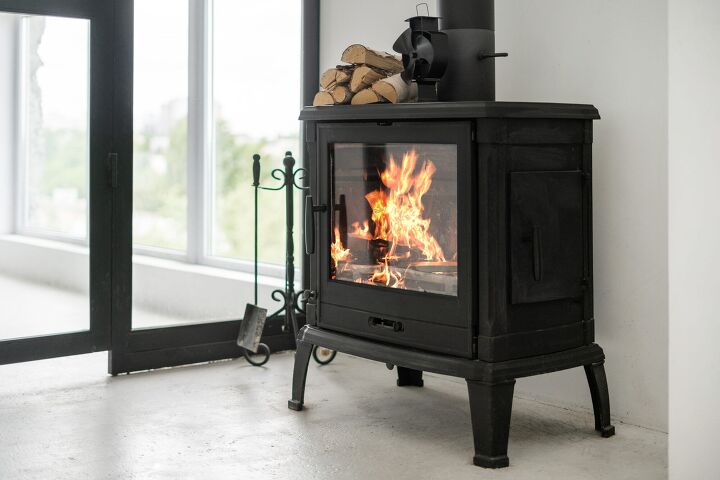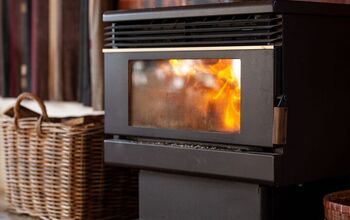Wood Stove Vs. Fireplace Insert: What Are The Major Differences?

If you’re trying to decide whether it’d be best to install a fireplace insert or a free-standing wood stove in your home, we’re here to help. In fact, most homeowners seek out more efficient alternatives to conventional heating methods. But, how do you know which is the ideal choice?
Although both wood stoves and fireplace inserts will lower your heating costs, burn cleaner, are more environmentally friendly, and keep your home warm, each come with their own unique advantages and disadvantages. If you have an existing fireplace or masonry chimney on your property, most choose to go the insert route. Whereas, wood stoves come with the major advantage of radiating heat on all sides, while a fireplace insert can only radiate heat from one – unless you add a blower motor.
With that said, let’s take a look at each of these heating appliances in further detail to understand what sets them apart. That way, you can make an informed decision about whether a fireplace insert or a wood-burning stove is best for your home.
Don't want to do it yourself?
Get free, zero-commitment quotes from pro contractors near you.

Overview of Fireplace Inserts
Fireplace inserts are essentially heating stoves that have been designed to fit directly within an existing masonry fireplace. In fact, homeowners that are unsatisfied with the heat from their current fireplace will often consider installing a fireplace insert. When compared to conventional fireplaces, fireplace inserts are far more efficient. However, like regular fireplaces, they are best suited for heating individual living spaces.
Inserts are installed partially inside and partially outside of the fireplace, with the wood burning inside of a thick, metal shell. They are may be made out of plate steel or cast iron, and typically feature glass doors so you can visually see the flames.
Fireplace inserts are available in a wide variety of decorative styles that can improve the look of your home or complement the décor of your existing fireplace. You can also choose from a number of fuel options, including:
- Gas
- Wood
- Pellet
- Electric
A blower motor is an extra feature that can be added to force heated air into the room, maximizing efficiency. Some units are also outfitted with an adjustable thermostat and remote operation.
Pros of Fireplace Inserts
- Space-saving: Since fireplace inserts are smaller in size than wood stoves, they take up virtually no space in your home. In fact, most consider them to be more visually pleasing and less of an eye sore than free-standing wood stoves.
- Easy installation: With fireplace inserts, you get to take advantage of an existing chimney for venting. This means the installation is much simpler, as there is no need to build a new venting system.
Cons of Fireplace Inserts
- Less efficient: When compared to traditional wood stoves, fireplace inserts are less efficient. They are limited in the heat that they generate. In most cases, you won’t be able to heat your entire home with a fireplace insert.
- Lack of ash pans: Unlike wood stoves, fireplace inserts do not contain ash pans. This means that you’ll have to manually shovel out the ashes once the fire cools, which can be a very time-consuming process.
Overview of Wood Stoves
Conventional wood stoves use a simple, metal firebox to burn wood and generate heat. The greatest advantage to these free-standing stoves is that it can be placed pretty much anywhere in your home. They come in a wide array of sizes and styles to fit any space. Unlike fireplace inserts, wood stoves are ideal for heating large living spaces or an entire home.
- A small wood stove can heat a home up to 1,000 square feet.
- A medium-sized wood stove will heat a home up to 2,000 square feet.
- A large wood stove can heat a home up to 3,000 square feet.
You can place a wood stove in your main living area, install one on each floor for zone heating, or put a larger unit in the basement to radiate heat throughout your entire home via the air vents. In this case, a fan is installed on the top of the stove to distribute warm air into the vents and spread the heat throughout your home.
Although wood stoves provide maximum efficiency for your home and are environmentally friendly, they still need a chimney or vent.
Pros of Wood Stoves
- More efficient: Overall, wood stoves burn more economically than fireplace inserts, produce more heat, and radiate heat on all sides.
- Larger volumes: Wood stoves typically have much larger capacities, with the ability to heat your entire home with a large unit.
- The presence of ash pans: Fortunately, most wood stoves are outfitted with pans that collect the ashes automatically and make cleanup much easier.
Cons of Wood Stoves
- Too bulky: One of the major complaints about wood stoves is that they are too big or bulky. These units tend to take up a lot of space in rooms and can be seen as unattractive to some people.
- More difficult to install: Installing a wood stove means that you have to also install some type of chimney or exhaust system. This can substantially increase the overall cost of the project.
Wood Stove vs. Fireplace Insert
In deciding between a wood stove and a fireplace insert, there are a number of considerations that must be made. These include, but are not limited to, the installation, heat output, cost, and size of the individual unit. Let’s break these down…
Installation
Both fireplace inserts and wood stoves must be installed by a professional hearth installer or chimney sweep. This job is simply not DIY friendly, as there are many factors to consider – from local building codes and proper installation of the various components to clearances and combustibles. Most jurisdictions require a permit and a special license, while some cities don’t even allow homeowners to handle the installation themselves.
If an existing fireplace or masonry chimney is available, oftentimes going with a fireplace insert is the most logical option. By doing this, you make your traditional fireplace 75% more efficient, you can use the existing chimney for venting, and you don’t take up any additional space with a free-standing wood stove.
With wood stoves, you need to have an exhaust system installed as well. This complicates the overall project, making fireplace inserts the more convenient option when it comes to installation.
Don't want to do it yourself?
Get free, zero-commitment quotes from pro contractors near you.

Heat Output
Another factor to consider is that wood stoves have a much larger surface area that is heated by fire inside of the firebox. It is then distributed evenly from all sides, as well as the top and the front. With wood stoves, no blower is required to move the heat around – although some come with the option.
Whereas, with fireplace inserts, a blower is needed in order to distribute heat to other areas of the home. Otherwise, inserts tend to only warm the space in which they are installed. If the insert does not come with a blower, a small door fan can be used for the same purpose.
Cost Comparison
When it comes to cost, most wood stoves range from $1,000 to $2,000. Though, you can often find some priced as low as $500, or as high as $3,000. This does not include the installation, which can cost between $250 and $800 for labor, and between $300 and $3,500 for the installation of a chimney or ventilation system.
Whereas, the cost to install a fireplace insert into an existing fireplace is between $900 and $3,100, including materials and labor. Costs vary based on the type of insert, type of chimney liner, and the conditions of the home.
Size
Size is crucial when it comes to heating appliances, as a small insert or stove may be able to heat only one room, while a larger unit could be capable of heating an entire home. When it comes to choosing a size, your best bet is to speak with a professional.
However, it’s important to note the size of a fireplace insert is limited by the size of the existing fireplace. With wood stoves, you aren’t limited to any particular size.
Related Guides

Jessica considers herself a home improvement and design enthusiast. She grew up surrounded by constant home improvement projects and owes most of what she knows to helping her dad renovate her childhood home. Being a Los Angeles resident, Jessica spends a lot of her time looking for her next DIY project and sharing her love for home design.
More by Jessica Stone



























